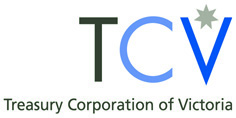
TCV’S diversity drive responds to a bigger task
Of all the Australian states, Treasury Corporation of Victoria (TCV) has experienced the biggest change in its funding profile as a result of the pandemic. Paul Kelly, head of markets at TCV in Melbourne, describes the flexible approach the treasury corporation is taking to its enlarged issuance task – including the role of sustainability bonds.
TCV increased its short-term borrowing quite substantially in 2021. What was the rationale?
TCV has always employed a mix of funding to meet the requirements of its clients and to manage interest rate and liquidity risk. However, 2021 continued to provide challenges associated with funding the state’s response to the economic impact of COVID-19.
There were also joint state-federal support packages that created short-term funding requirements, which TCV managed through the issuance of domestic and euro commercial paper (CP). Demand for semi-government paper in both markets has been strong. We also took the opportunity to launch a A$3.25 billion (US$2.3 billion) 2027 floating-rate note (FRN) to add some term floating-rate diversity to our portfolio.
TCV’s funding task for 2021/22 has risen to A$37 billion from A$27 billion. What is the strategy for meeting this requirement?
The increased funding task has required us to have a much more systematic approach than we may have needed in previous years. We have communicated to the market that we will undertake at least one tender each month and have been exceeding this in most months. In fact, in fiscal year 2021 we have conducted 11 tenders across 25 separate bonds totalling more than A$6.7 billion.
We have remained active via syndication as well. We launched six syndicated trades in 2021, including new 2025 and 2033 benchmark bonds, the 2027 FRN and the 2035 sustainability benchmark bond. All in all, we raised just more than A$12 billion via syndication.
We were also very active in responding to investor demand via reverse enquiry. This is an important mechanism for aligning investor demand with TCV supply needs and it allows this to occur without adding stress to markets or to spreads.
Diversification of funding is an important strategy – be it CP, FRNs, benchmark or nonbenchmark lines, or even ultra longs when the opportunity arises. One thing we have tried to do since the onset of the pandemic is to remain flexible and, where we can, to issue into pockets of demand. The market has responded positively to this and support across the investor spectrum has remained robust.
We have also been consistent with our messaging to the market throughout 2021 and will continue to provide appropriate guidance where we can.
We advised markets in our December update that the primary source of funding will remain our domestic benchmark bonds. We are not expecting to differ from this too much. We will of course monitor opportunities to access other markets, as we did in 2020 and early 2021, through our EMTN programme and we will employ floating-rate products if and when it is appropriate to do so.
Does TCV foresee supply pressures in the semi-government sector?
Supply pressure in the sector was allayed a little after the December round of state budget updates. Nonetheless, Victoria’s update showed an upward revision to its funding and the overall borrowing task of the sector remained elevated. TCV remains a long-term borrower and will continue to build out some of its newer longer-dated benchmark lines. However, the growth in the borrowing portfolio also provides opportunities to tap existing lines and we have been active from 2023 onwards.
We continue to take feedback from investors and our dealer panel banks about where pockets of demand are and what internal benchmarks or hurdles are driving demand. This helps us plan for which bonds we may tender in the near term or whether conditions are suitable for larger syndicated trades.
TCV issued a sustainability bond in September 2021, its first in the format after previously issuing green bonds. How is this sector evolving?
There is no doubt that demand for these types of products among domestic investors is accelerating. Our sustainability bond was a great opportunity to highlight the state’s commitment to green and social projects, and our decision to make the sustainability bond the TCV 2035 benchmark bond line represents a high level of confidence in the ongoing investment by the state in the underlying assets. We will continue to grow this line to a size comparable with our other benchmark lines.
Looking forward, as all issuers develop their ESG [environmental, social and governance] frameworks and disclosures it will be interesting to see if we migrate away from issuing branded bonds to an environment where the market considers an issuer’s ESG credentials as a more relevant measure.
TCV has in the past discussed reinvigorating its green-bond programme. Has thinking on this developed in light of the larger funding task?
We are looking at the various issuance methods in the green, social and sustainability (GSS) bond space and will spend some time updating our framework before coming to market in what we think is the most appropriate form. TCV has had several years with low funding requirements since issuing the inaugural semi-government green bond in 2016, which has restricted our ability to diversify our funding over this time.
Given the larger funding task we are facing going forward, this is no longer the case. We will certainly re-enter the GSS bond market at some stage.

HIGH-GRADE ISSUERS YEARBOOK 2023
The ultimate guide to Australian and New Zealand government-sector borrowers.








